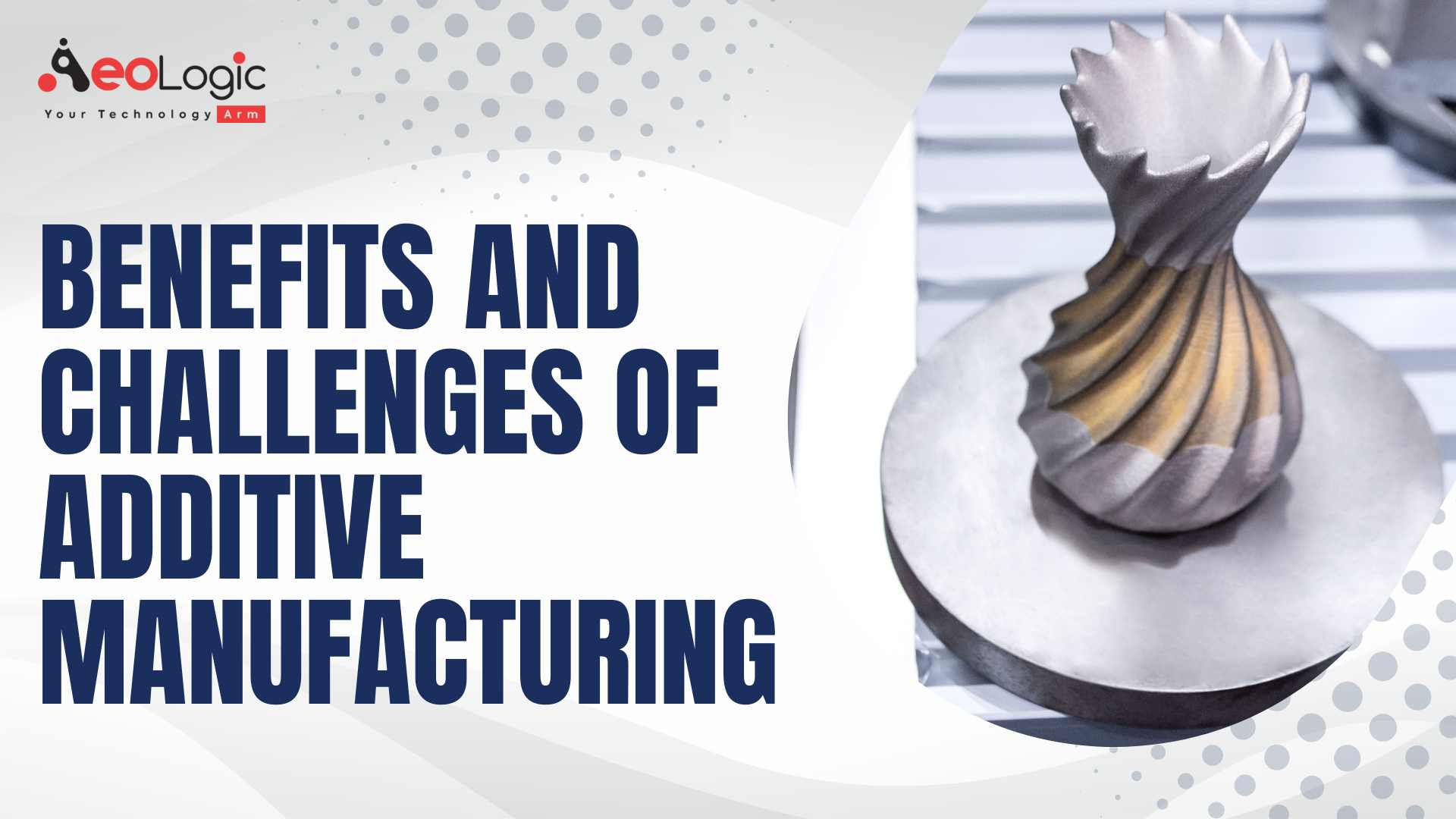Additive Manufacturing, or 3D printing, is a process that creates a three-dimensional object via successive layers of material. These objects can be of any shape or size the designer chooses. 3D printers have a wide range of applications and are used primarily to produce prototypes quickly, but they are also capable of producing end-use parts if they are quality assured in advance. This article explains the benefits and challenges of additive manufacturing to help you figure out if this process is right for your project.
Let’s begin!
Table of contents
- Additive Manufacturing Overview
- Benefits of Additive Manufacturing
- Challenges of Additive Manufacturing
- Conclusion
Additive Manufacturing Overview
Additive Manufacturing (AM) is the process of making three-dimensional objects from a digital file. The object is created by successively adding material layer by layer until the entire object is complete.
There are several benefits to additive manufacturing, including the ability to create complex shapes that would be difficult or impossible to create using traditional manufacturing methods, and the ability to produce objects quickly and efficiently. Additionally, there is very little waste material associated with AM, as opposed to traditional subtractive manufacturing processes.
However, there are also some challenges associated with additive manufacturing. One of the biggest challenges is the high cost of AM equipment and materials. Additionally, trained personnel are required to operate AM equipment, which can further increase costs. Finally, it can be difficult to achieve consistent results with AM due to the inherent variability in the process.
Also Read: Why Is CRM Software a Game-changer When It Comes to Delivering Better Customer Experiences?
Benefits of Additive Manufacturing
Additive manufacturing, also known as 3D printing, is a process of making three-dimensional solid objects from a digital file. The creation of a 3D printed object is achieved using additive processes, where successive layers of material are laid down in different shapes.
There are many benefits of additive manufacturing over traditional manufacturing methods. With additive manufacturing, there is no need for expensive tooling or molds, and the production process is much faster. Additionally, additive manufacturing allows for more complex designs and shapes to be created that would not be possible with traditional manufacturing methods.
There are also challenges associated with additive manufacturing. One challenge is the high cost of some additive Manufacturing equipment. Additionally, the accuracy and repeatability of additive Manufacturing can be lower than traditional methods, and there can be issues with the surface finish of 3D printed objects.
Also Read: The Role of AI in Education And Learning: Just Promises Or Revolution
Challenges of Additive Manufacturing
Additive manufacturing (AM) is a process of making three-dimensional solid objects from a digital file. The advantages of AM over traditional manufacturing techniques are its ability to create complex shapes, lighter weight products, and lower energy consumption. However, there are also several challenges associated with additive manufacturing that must be considered before implementing this technology.
One of the biggest challenges of additive manufacturing is the high cost of equipment and materials. In order to print a 3D object, you need a 3D printer, which can cost thousands of dollars. Additionally, the filaments or powders used in 3D printing can be expensive, especially if you require multiple colors or materials.
Another challenge with additive manufacturing is the time it takes to print a 3D object. Depending on the size and complexity of the object, it can take hours or even days to print. This can be impractical for mass production or when time is critical.
There are also limitations on the types of materials that can be used with additive manufacturing. While more and more materials are being developed for use with 3D printers, there are still many items that cannot be printed using this technology. This includes items made from metal or glass or that have intricate details.
Despite these challenges, additive manufacturing is an exciting and rapidly evolving technology with great potential for businesses and consumers alike. As costs continue to fall and capabilities increase, we will see more and more amazing applications for this transformative technology.
Also Read: 10 Ways to Use Artificial Intelligence to Improve Business Processes
Conclusion
Additive manufacturing is a process that has a lot of potential benefits, but it also comes with some challenges. It’s important to be aware of both the advantages and disadvantages of additive manufacturing before deciding whether or not it’s right for your business.
We hope this article has helped you better understand the benefits and challenges of additive manufacturing so that you can make an informed decision about whether or not it’s right for you.
Are you looking to implement technology into your business? If yes, so, please feel free to contact us at support@aeologic.com
Related Blogs:
- How AI/ML Can Change the Public Transportation Industry
- Transforming Business With Digital Technology in the Oil Palm Industry in India
- Importance of Digital Asset Management in the Retail Industry
- How AI is Transforming the Agriculture Industry
- 10 Ways to Use Artificial Intelligence to Improve Business Processes
- The Future of IoT Technology in Convenience Stores
- Building Manufacturing Resilience Through AI and ML
Talk to us for a free consultation with our industry experts: support@aeologic.com









